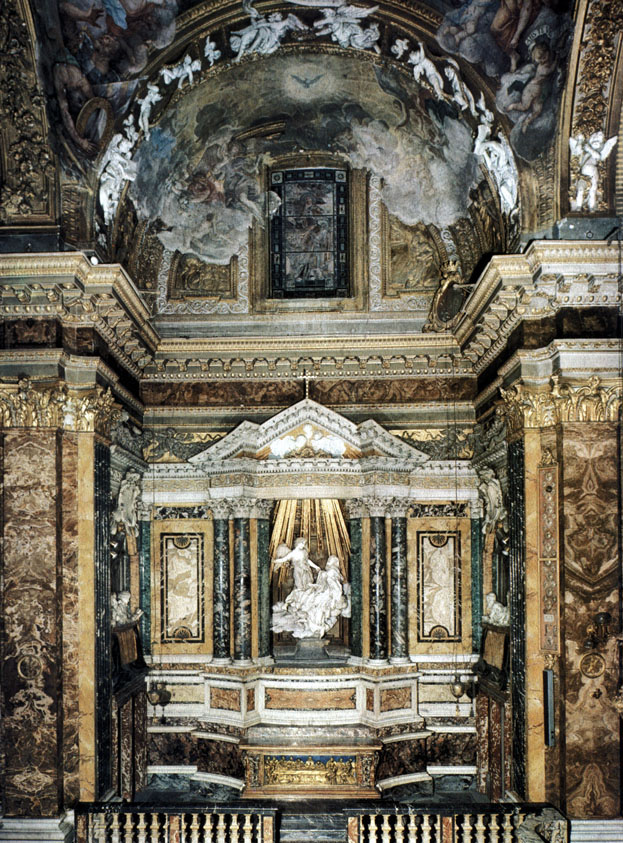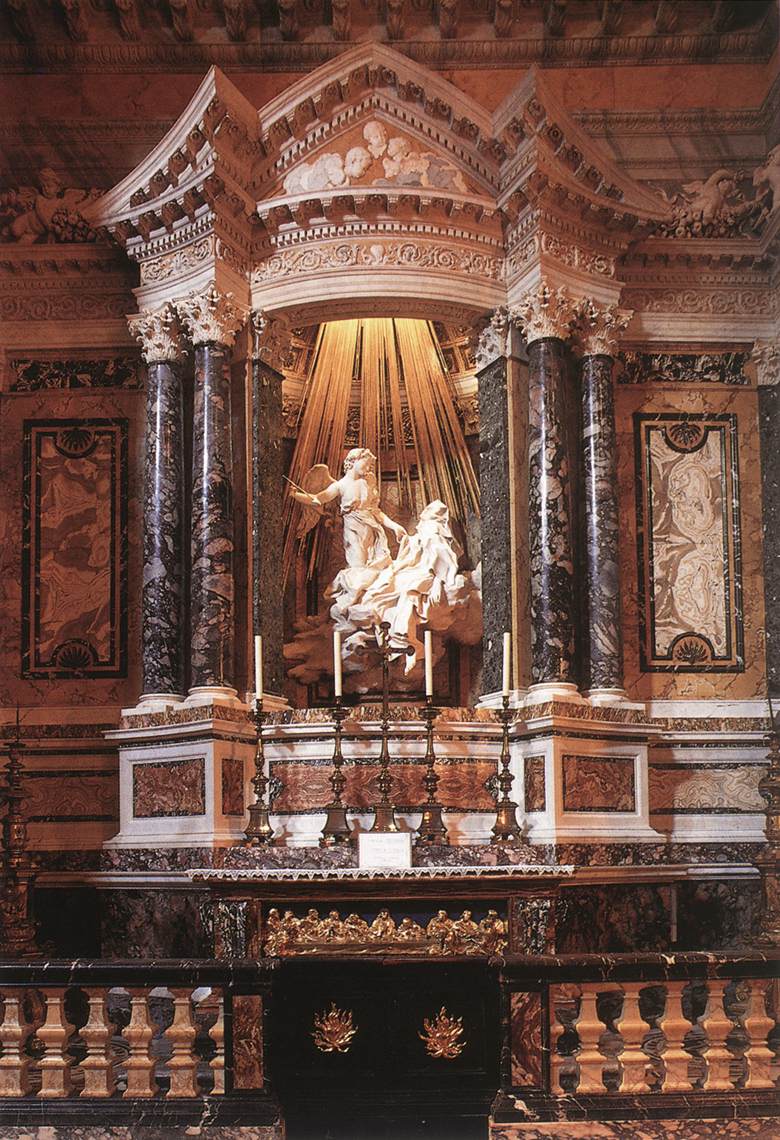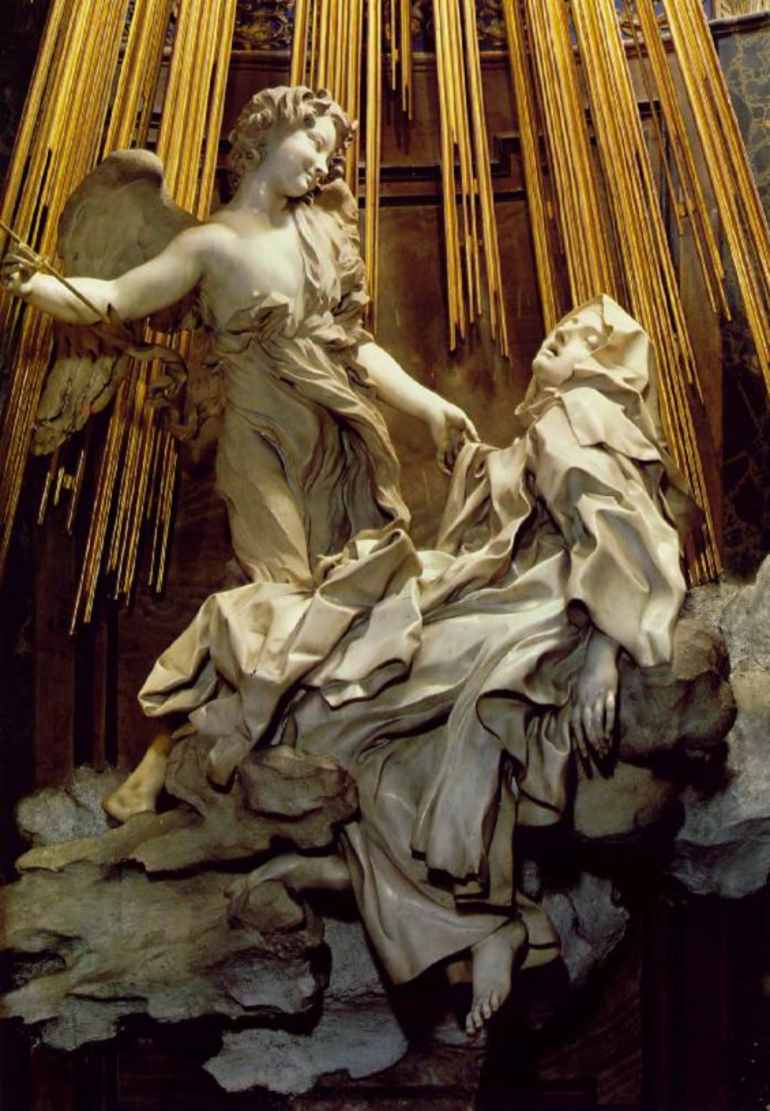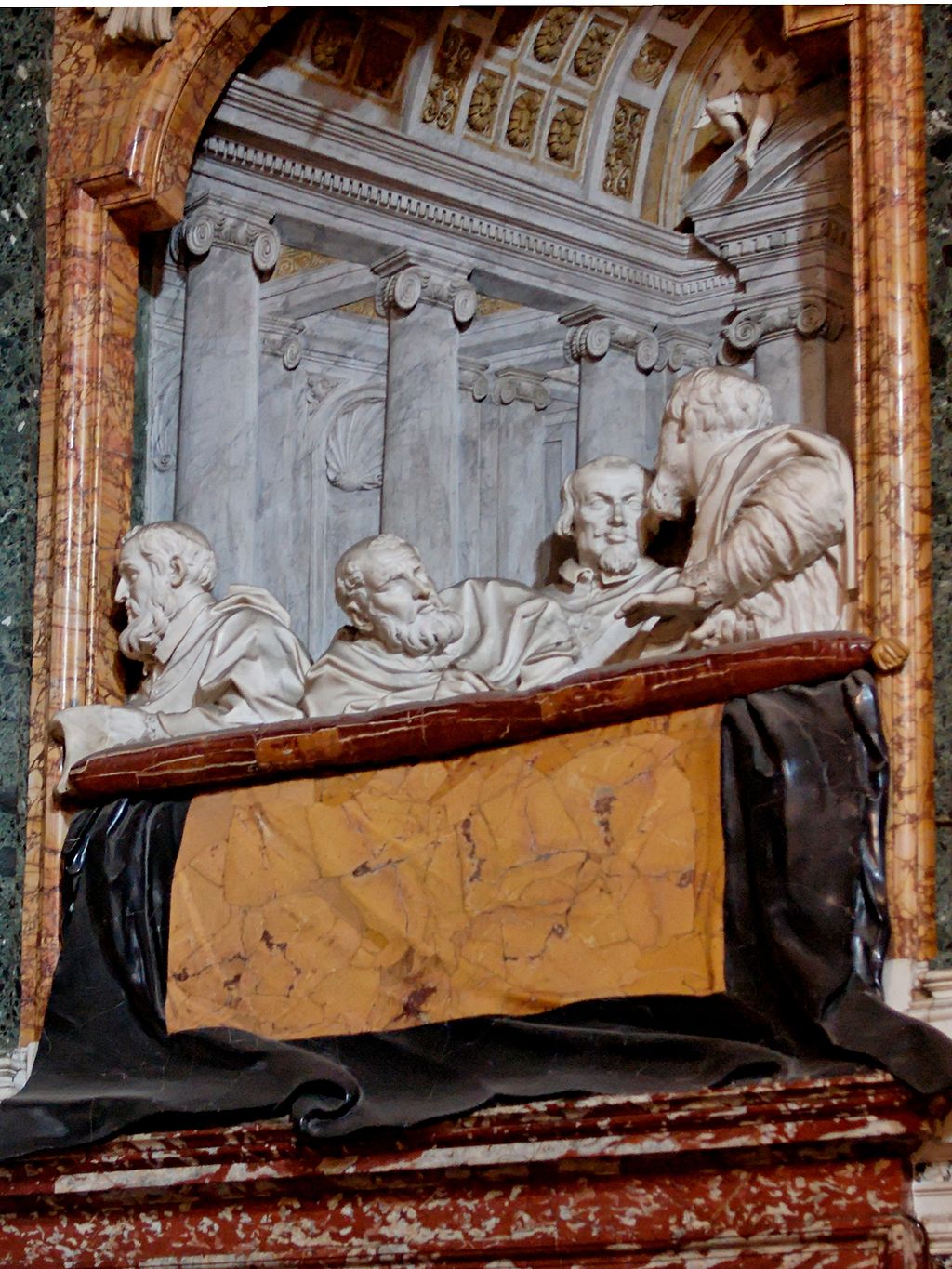
Gian Lorenzo Bernini, et al, Cornaro Chapel, 1652, Italian Baroque. Commissioned by Cardinal Federico Cornaro. Santa Maria della Vittoria, Rome, Italy. Image Credit: Oberlin College
The Cornaro family, a wealthy and powerful family in Rome with close ties to the Church during the Counter Reformation, commissioned this chapel, located in the Santa Maria della Vittoria. This chapel is considered one of Bernini’s best works.

Cornaro Chapel (detail). Image Credit: Kenny Mencher
As the viewer approaches the Cornaro Chapel, he or she may be struck by the shallowness of the chapel; it is a relatively small space. However, Bernini was still able to maximize the area. Several ornate columns and a broken triangular pediment, which is formed by curved edges that seem to push outward, frame the main altar. This apparent bending of the pediment serves to thrust the altar forward and create a sense of depth in the confined space. Painted stucco figures and clouds decorate the ceiling and serve to lift the ceiling and give a heavenly ambiance to the entire space. These techniques for expanding the perceived size of the room, as well as the grandiose nature of the columns, the ceiling, and the pediment, are common throughout the Baroque.7

Gian Lorenzo Bernini, “Ecstasy of St. Teresa,” 1652, Marble. Cornaro Chapel, Santa Maria della Vittoria, Rome, Italy. Image Credit: Kenny Mencher
At the center of the chapel, just above the altar, sits one of Bernini’s best known sculptures: The Ecstasy of St. Teresa.5 This sculpture depicts one of the visions of Saint Teresa of Avila. She believed that a spirit sent by God came to her in a vision and pierced her with a flaming arrow, which in turn filled her with a deep, pleasurable pain that she equated with the love of God. This sculpture captures this vision right at the height of the action. The spirit, represented as a cupid-like figure, is just about to pierce St. Teresa’s heart. Her face is etched with divine pleasure and anticipation. She is enveloped in robes that morph into the clouds on which the entire scene takes place; this adds to the divine nature of the scene, while also demonstrating Bernini’s masterful skill. Combining these intricate details with the open space and outstretched arms of the angelic figure—a difficult feat given the brittle nature of marble—Bernini is using his unmatched skill to enhance the dynamism, and thus the lifelikeness, of the entire scene.
It is also quite clear that this sculpture is rather erotic; the pleasurable pain that St. Teresa is experiencing has an inherent sexuality to it. This is perhaps the first time that bodily pleasure is equated with spiritual closeness to God. This principle was common throughout the Baroque and essential to the Church’s goals during the Counter-Reformation.6
The natural lighting entering above and behind the sculpture, along with the gilt wood sunrays along the back wall, further enhances the divine atmosphere of the space. It adds a sense of theatricality to the piece, while also adding depth to the chapel. These aspects serve to draw the viewer’s attention, while also facilitating the awe-inspiring experience that Bernini sought.

Relief Carvings (right side of altar). Image Credit: Kenny Mencher
In the walls on either side of the main altar, groups of people are carved in relief; these figures, like the viewer, are audience members—some are saints, while others are members of the Cornaro family. They serve as intermediaries between the viewer and the heavenly scene before them.7 These rhetorical figures also demonstrate how to react and behave, as good Christians, to this piece. These people are engaged in lively conversations, perhaps about the beautiful, central altar, or perhaps they are furiously debating and discussing the state of the church and Christianity as a whole. These figures represent the state of the church during the Counter Reformation and how Christians should approach their own personal experiences with God; the Church welcomed the introspection and debate that these figures represent.
When one enters the Cornaro Chapel, he or she is quite literally surrounded, and perhaps overwhelmed, by the sensual works and illusionary effects of the chapel. Bernini’s careful blending of painting, sculpture, and architecture—a true composto—elicits a powerful, spiritual experience for the viewer. This is the central tenant of Baroque architecture and the primary artistic goal of the Counter-Reformation.
Learn more here: http://www.chiesasantamariavittoriaroma.it/